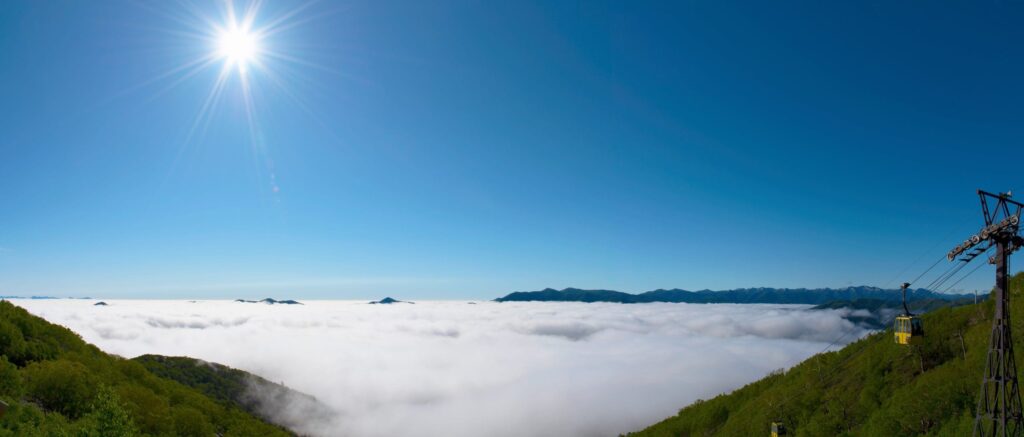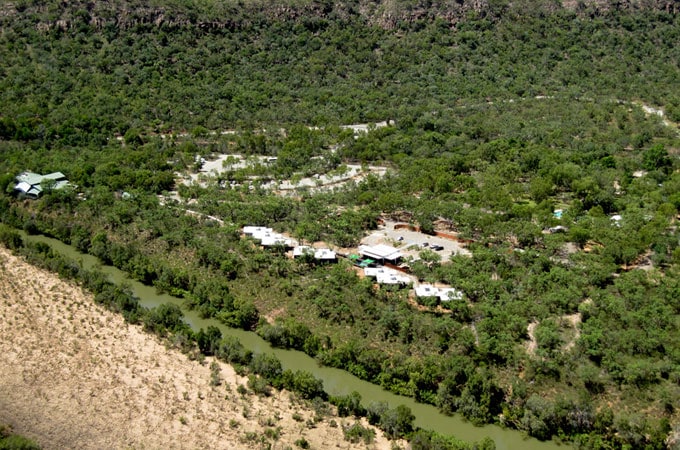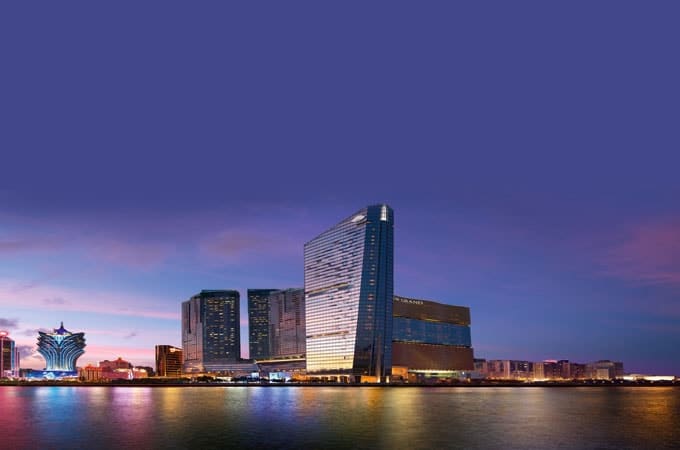More natural and less inhabited than the rest of Japan, the northern island of Hokkaido is an ideal place for adventure holidays, with a twist. Take Tomamu, a ski resort about an hour’s drive from Sapporo, whose main summertime attraction is an early morning gondola ride up to 1088 metres, to see a phenomenon called the unkai (“sea of cloud”).
Even if you miss seeing the unkai, the pre-dawn journey to the top of the mountain in a cosy yellow four-person gondola is worth getting up early for; watch for deer grazing below and mountain doves above (and, if you’re lucky, a bear or two). Tomamu also offers romantic river rafting picnics and, summer or winter, indoor surfing – at one of Japan’s largest wave pools.
Related article: Tokyo for Honeymooners and Holidaymakers
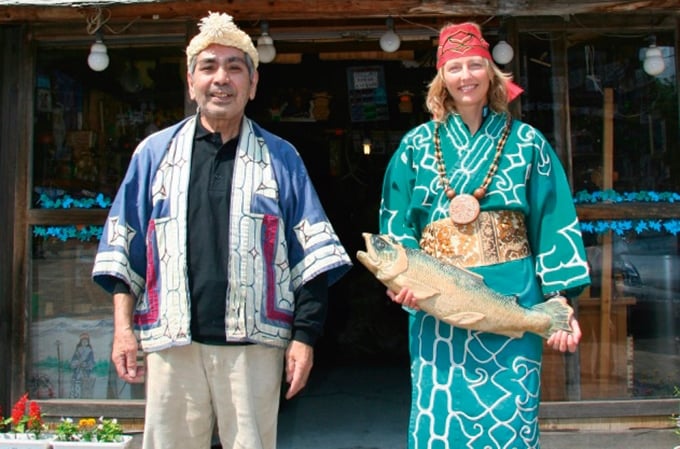
Not far from Tomamu, at Lake Shikaribetsu, in Daisetsuzan National Park, you can go kayaking, canoeing and fishing or take meditative nature walks through the forest in summer. In winter the lake freezes to become an icy wonderland where the locals build a village of ice-lodges you can stay in.
Hokkaido has unusual edible offerings too. At Koshimizu Natural Flower Garden, a botanical wildflower garden on the north-east coast, you can treat yourselves to cones of gelato in flavours such as asparagus, cheese, even “drift ice” (made from Siberian sea ice that collects along this coastline every winter).
But it’s the unexpected natural delights that stay with you long after a trip to Hokkaido: hand-feeding Ezo chipmunks overlooking the picturesque Lake Mashu; being woken by the sun peeking through undrawn curtains at 3.30am (it really does rise at this unearthly hour in summer); sitting side-by-side on a wooden bench, soaking your feet in a hot pool you have dug yourselves from black sand on the edge of Lake Kushiro; and taking a cruise on Lake Akan to see, in purpose-built aquariums, lurid green basketball-sized moss balls (marimo) that look like something Dr Seuss might have dreamed up.
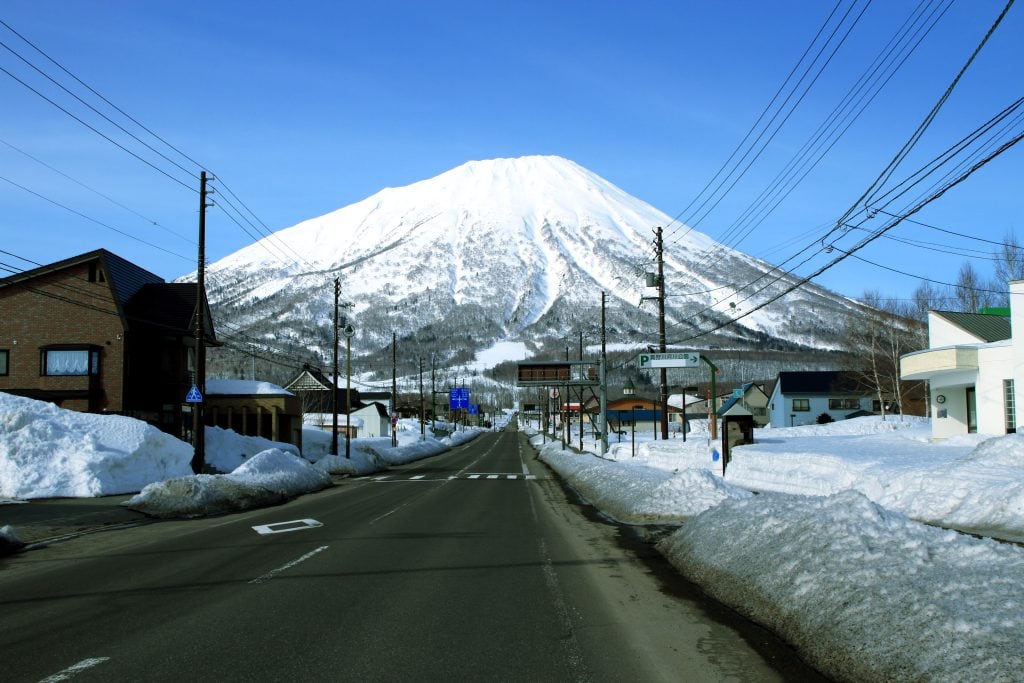
Related article: Asian Islands for Two: Okinawa, Japan
Lake Akan, in eastern Hokkaido, is also one of the few places in Japan still inhabited by indigenous Ainu. After watching a performance of traditional barefoot dancing, we met a particularly friendly Ainu shopkeeper who took great delight in dressing me in an authentic Ainu outfit, complete with headscarf and heavy beaded necklace; he then handed me a large wooden fish so my bemused boyfriend could take photos.
Hokkaido’s piece de resistance for nature-lovers is Shiretoko National Park, which was World Heritage listed in 2005; its forested hiking trails are some of the best in Japan, and there are spectacularly scenic cruises along its rugged peninsula. Add to all this the fact that Hokkaido has hundreds of onsen (hot spring) hotels, and you have the perfect way to end each perfect, natural day.
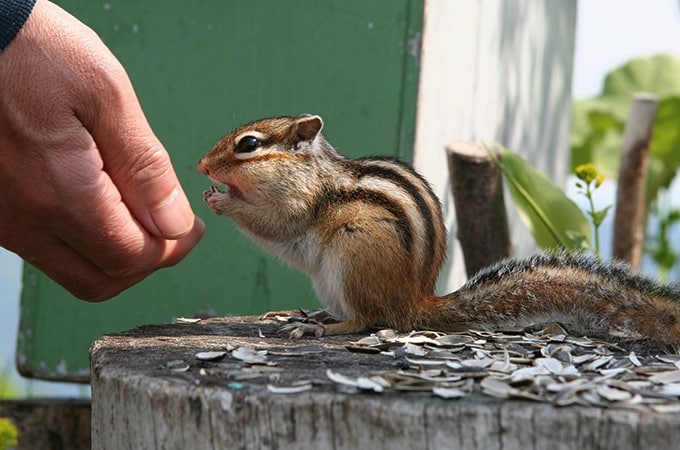
Hokkaido Travel Guide:
Hokkaido, the northernmost island of Japan, is a vast and expansive place. In fact, it covers 22% of Japan’s total surface area, making it the largest prefecture in the country. You’ll need to keep this in mind and plan accordingly. If you are wanting to explore the diverse regions of Hokkaido in Japan but prefer not to drive, the JR Hokkaido Rail Pass is a convenient option. With this pass, you can enjoy unlimited rides on the JR Hokkaido trains as well as designated JR buses within Hokkaido.
How to Get to Hokkaido: Getting to Hokkaido is convenient, and there are multiple options available. The most common way to reach Hokkaido is by plane, with direct flights from major airports in Japan and international flights from Shanghai and Seoul. The main airport in Hokkaido is New Chitose Airport in Sapporo, the closest airport to popular ski resorts like Niseko.
Another option is to fly into Asahikawa Airport for ski resorts in Central Hokkaido, such as Furano or Asahidake. Obihiro Airport is another potential gateway airport for access to Tomamu and Sahoro ski resorts. It is recommended to compare different airlines and routes using flight search engines to find the best flight option for you.
If you are coming from Tokyo, you can also take the Shinkansen, Japan’s high-speed train, which takes approximately 90 minutes to reach Hokkaido.
When should you visit Hokkaido? Hokkaido offers different attractions and activities depending on the season. There’s no bad time to visit Hokkaido, but consider what you want out of your trip before deciding on when you will visit.
In Spring, visitors can witness the beauty of cherry blossoms, which bloom later in Hokkaido compared to other parts of Japan.
Autumn brings vibrant foliage and the opportunity to taste freshly harvested produce and salmon roe.
Summer is the season of lavender and other flower festivals and outdoor activities like hiking, mountain biking, and golf.
Winter is a popular time for vHokkaido thanks to its reputation for excellent skiing conditions, with popular resorts like Niseko, Rusutsu, and Furano beckoning travellers from all over the world. The Sapporo Snow Festival is a must-see event featuring impressive snow and ice sculptures. Also, drift ice boat cruises and walks on ice floes have become popular.
First-Hand Experiences in Japan: More Stories from Real Travellers:
Hakone: Hakone Travel Guide: Onsens, a view of Mt. Fuji (if you are lucky!), and Natural Beauty
Koyasan: Enjoy a Unique Temple Stay in Japan’s Koyasan
Tokyo: What to See & Do in Tokyo on Your Holiday or Honeymoon
See & Do: Crazy Cool Things To See in Japan
